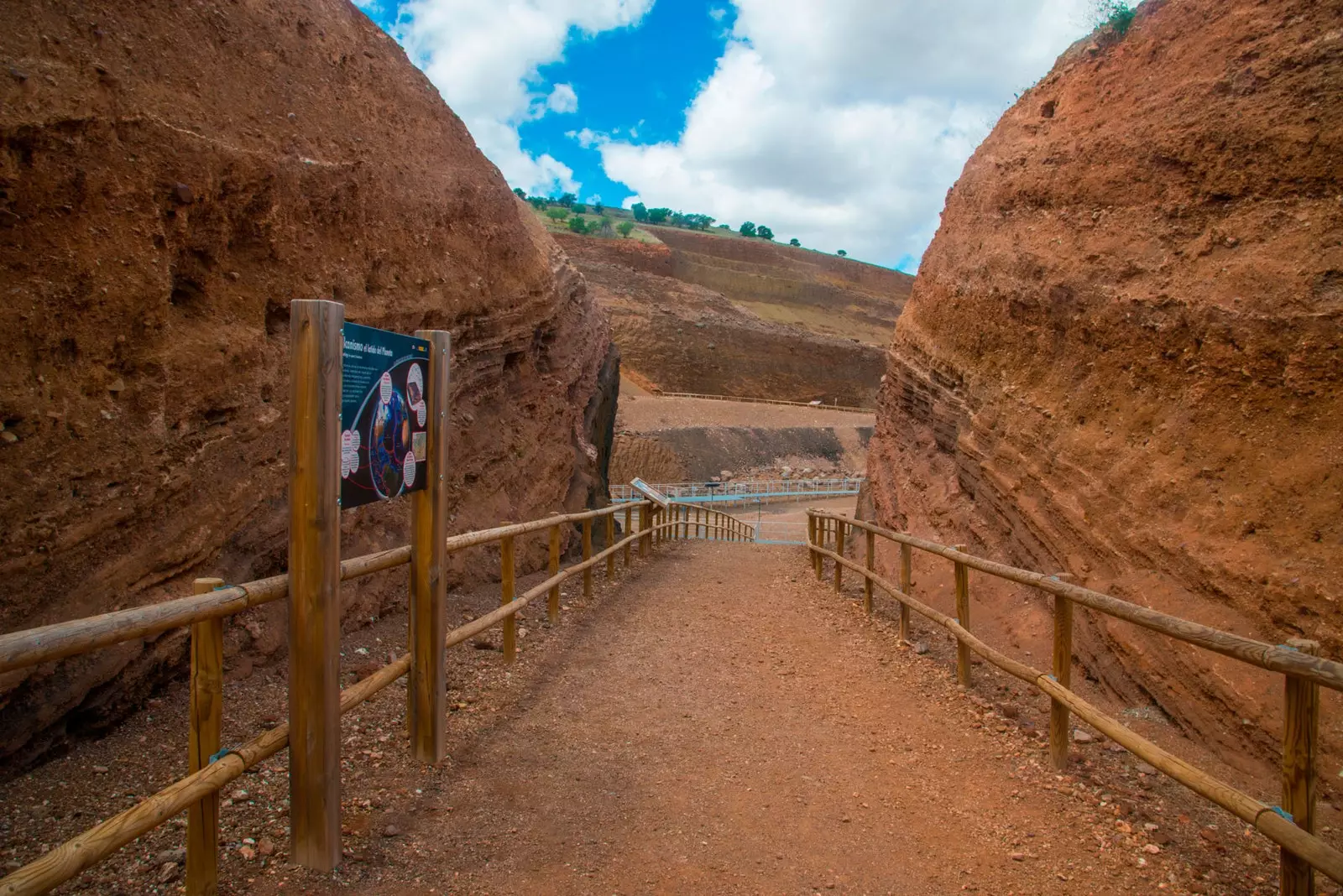
Cerro Gordo, the first visitable volcano in the Iberian Peninsula
From this year we no longer need to take any plane or travel thousands of kilometers to visit a volcano. It is enough to approach the ** Campo de Calatrava **, whose 5,000 km² house more than 330 volcanic buildings throughout Ciudad Real. It is in one of them, nicknamed Cerro Gordo, where the Association for the Development of Campo de Calatrava has opened the first museumized volcano on the Iberian Peninsula.
To get there we must take the Andalusia road (A-4) to Puerto Lápice (kilometer 136), and there take the CM-420 to Daimiel . There we continue towards Almagro until we take the CM-413 towards Granátula de Calatrava, the closest town to our destination.
Shortly before arriving, we turn right (we will see a sign indicating the volcano) along the CR-5122 towards Valenzuela de Calatrava , and a few meters later A dirt road to the right again will take us to the car park.
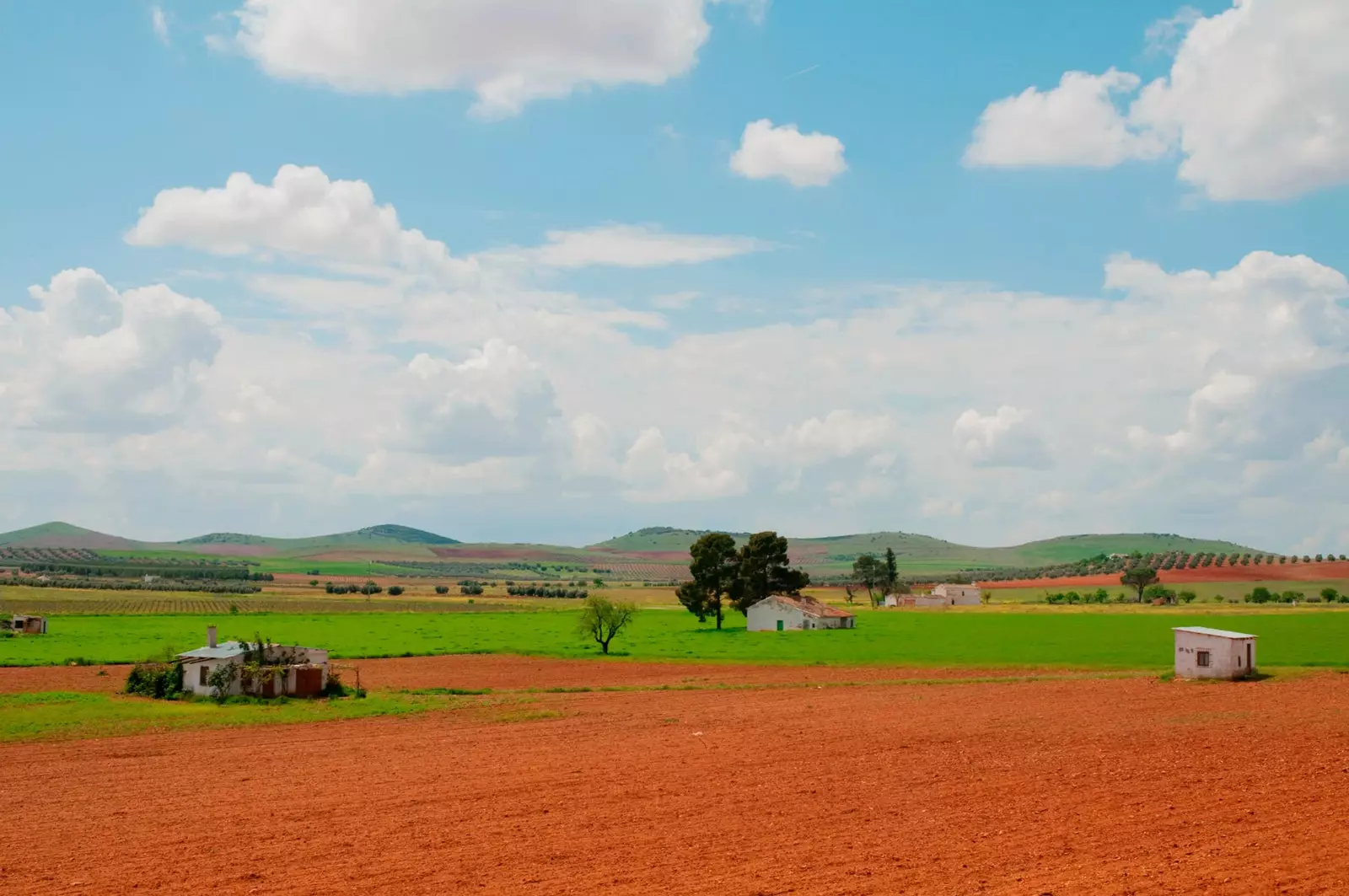
The landscape of Campo de Calatrava
Saturdays and Sundays offers next to the ticket (2.5 euros general, 1.5 reduced, children free) guided tours in the mornings (at 12:00 p.m.) and afternoons (4:00 p.m. in winter, 6:00 p.m. in summer). Wednesday and Thursday they also open from 10:00 a.m. to 12:00 p.m., usually for school and institute excursions.
It is also offered a pack (4 euros) that in addition to the museum includes a visit to the archaeological site of Oreto and Zuqueca, as well as to the House of General Espartero , located all in Granátula and surroundings. In any case, it is best to check schedules and book through their website before driving for two hours (from Madrid) and taking care of our health.
We planted ourselves on a good autumnal Sunday morning, where the anticipated winter of this year ravaged us with a dry cold typical of the steppe of La Mancha (it is advisable to dress warmly at this time of year) . In the entrance hut At 12:00 noon, our guide appears with his 4x4, accompanied by the hikers who have done the complete tour.
The truth is Fat Hill It is not the typical volcano that any person without knowledge of geology has in his head, but rather a small mountain that manages to break the eternal plains of vines and olive trees that populate this part of Castilla-La Mancha.
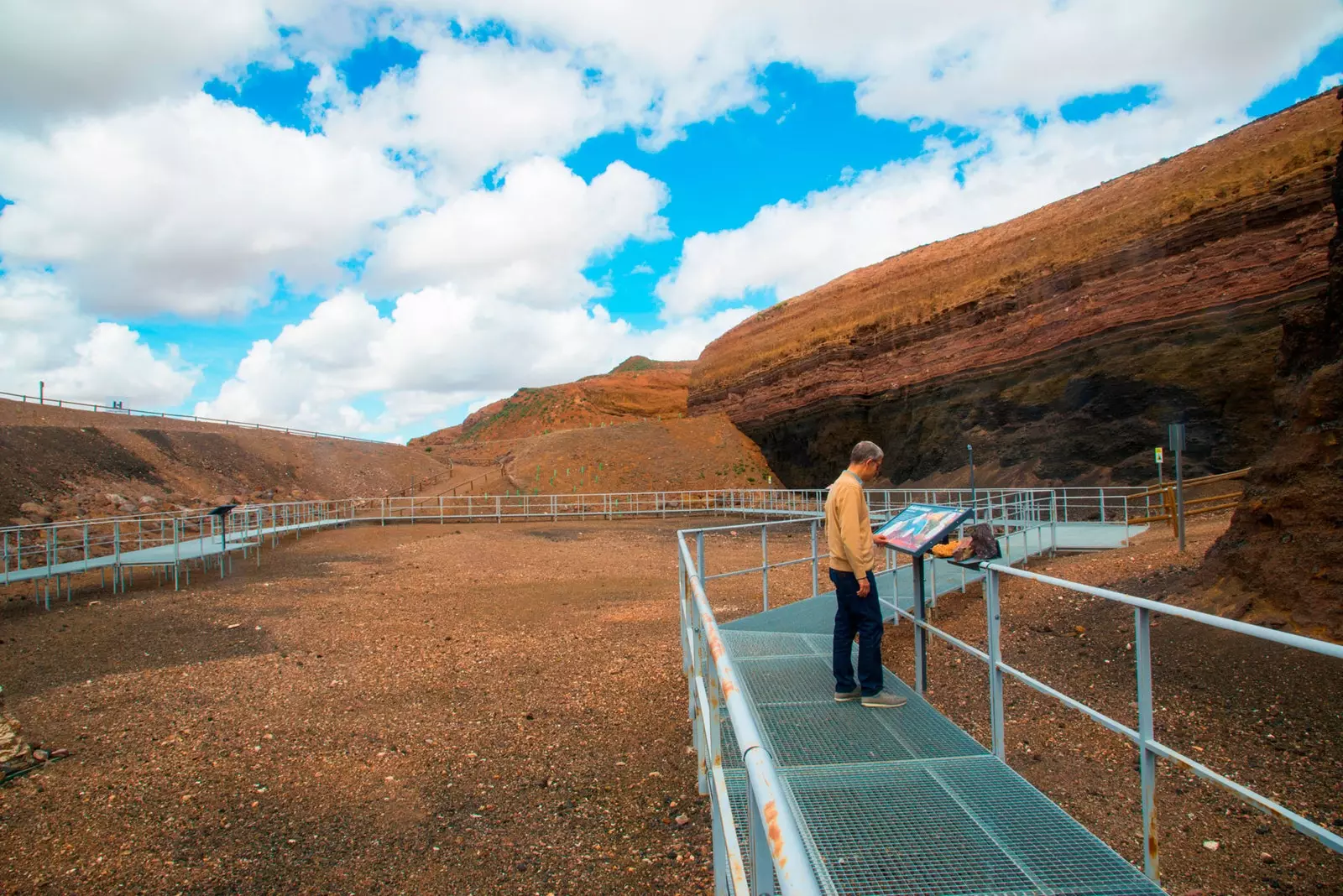
Cerro Gordo, in Campo de Calatrava (Ciudad Real)
There he will explain to us how the Campo de Calatrava is an interior plate volcanism, linked to the uplift of the Betic Cordilleras and the displacement of the Eurasian and African plates. It began 8.5 million years ago with the eruption of the Bell pepper from Villamayor de Calatrava , and reassures us by clarifying that its last eruption took place at the Columba volcano 5,500 years ago
We also discovered that there are two geysers, but located on private estates , and that the opening of the museum has been possible thanks to the collaboration of Lafarge-Holcim Spain , the company that currently exploits the area to extract ashes and materials with which to make its cosmetic products (the tour takes advantage of the excavation that has already been done) .
A good part of the visit will be spent seeing a large sample of the different volcanic rocks (more than seventy) that are in the field (and that, of course, it is forbidden to take) : pumice stones, basalts, volcanic muffins, obsidian, magnetite , vegetable fossils, ammonites, trilobites, pyroclasts, silicates… He will pass them around so that we can touch them with our own hands while he explains their properties and uses.
Once we cross the cabin, you will have the scientific experiments ready for the little ones to enjoy, who will be able to see fun and exciting eruptions live. From there it starts down a ramp the descent towards the route of the volcano, in the open sky, where the degrees Celsius will drop as we lose altitude.
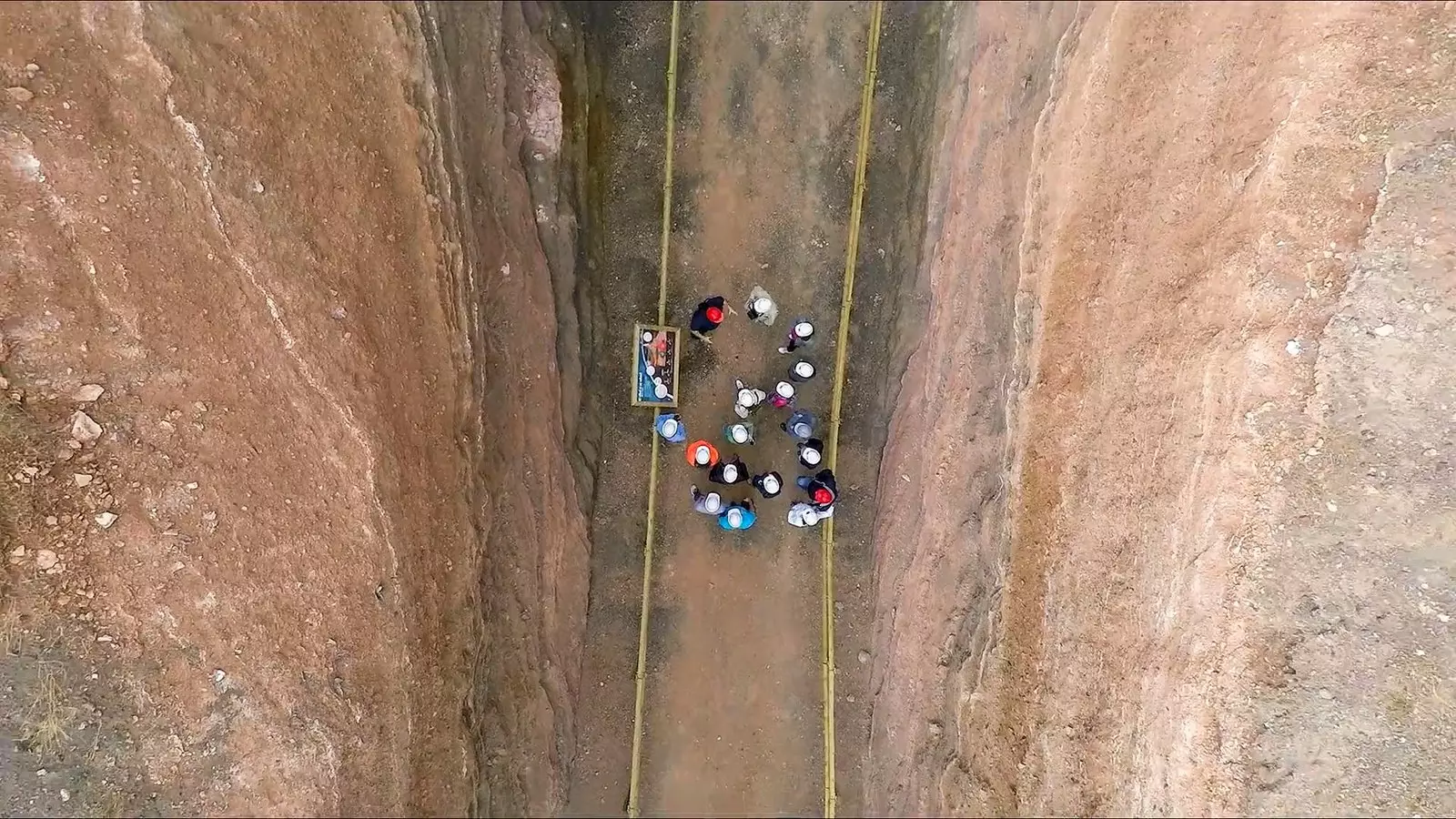
During the visit we can see a large sample of volcanic rocks
Here the most spectacular without a doubt is to see in the cut that they have put into the volcano the different layers of strata that once caused the four eruptive phases that created it , from the basaltic pyroclasts at the base to the current soil, passing through the flow of pyroclasts and explosive breccias, and the lahar, a mud deposit with sediments of volcanic material.
The guided tour lasts about an hour. Then they will give us time to complete the route on your own, which ends by going up a hill where we will have to one side the current farm that Lafarge-Holcim continues to do on the ground and a viewpoint to the other.
We will be able to calmly read the different explanatory panels and take out our camera. before returning to the car to head back.
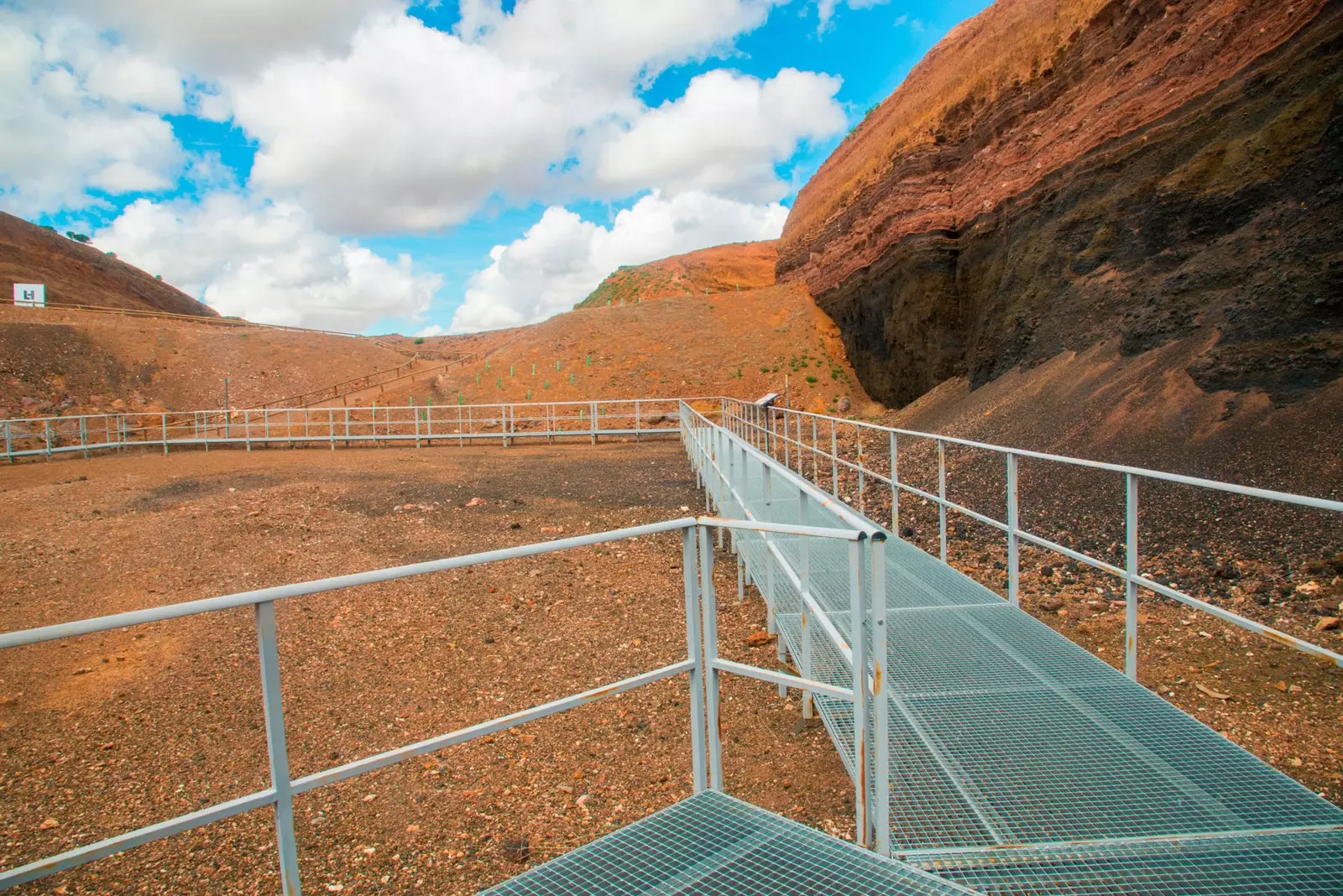
There is a volcano closer than you think!
